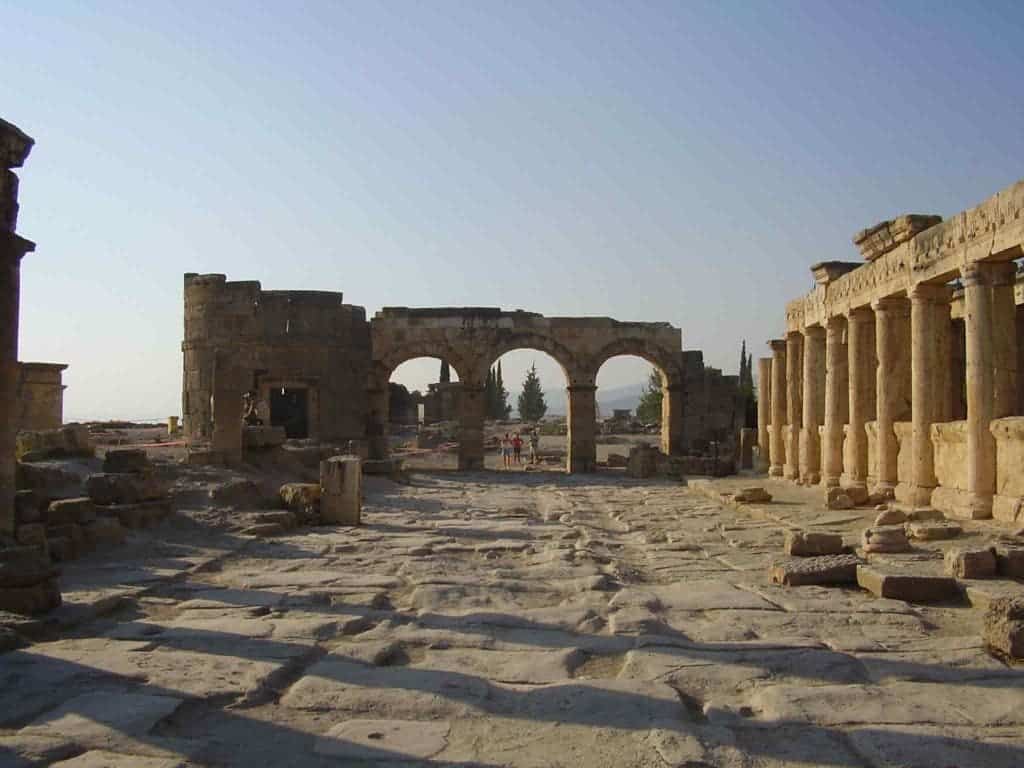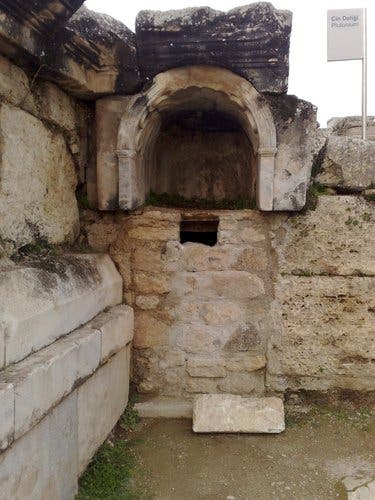Romans staged elaborate sacrificial rituals in which castrated priests walked through the “Gates to Hell,” carrying with them healthy bulls. The priests would return unscathed, while the sacrificial animals would succumb to the Gods. Now, a new study has found the secret to this ancient ritual.

The Gate to Hell
In 2013, archaeologists made an intriguing discovery in the Greco-Roman city of Hierapolis, now in modern-day Turkey. Known as Pluto’s Gate, or Ploutonion in Greek, the cavern was a gate to the underworld.
Archaeologists dug up its temple, pool, and steps leading down to the ceremonial cave, all matching ancient historical depictions of the place.
Back in the Ancient times, the Greek geographer, philosopher, and avid traveler Strabo, (64/63 BC to 24 AD) described it thusly:
“This space is full of a vapor so misty and dense that one can scarcely see the ground. Any animal that passes inside meets instant death. I threw in sparrows and they immediately breathed their last and fell.”
Strabo also described how sacrificial rituals were carried at the site. Castrated priests would be left unharmed, while animals were killed without any human intervention. There’s no reason to doubt his and others’ recollection of the events. But what was really happening there?

Geology and magic
Hierapolis itself lies in a geologically active area. Its geothermal waters were a major attraction, with many people believing they have magical healing powers. But beneath the city, a massive fissure (the Babadag fracture zone) leaks volcanic carbon dioxide, which is barely visible as a mist. The same phenomenon is happening today.
Volcano biologist Hardy Pfanz at the University of Duisburg-Essen in Germany wanted to measure these emissions, so he took a portable gas analyzer system to map the CO2 concentration at the ancient temple. In the study, he writes:
“The concentrations of CO2 escaping from the mouth of the grotto to the outside atmosphere are still in the range of 4–53% CO2 depending on the height above ground level. They reach concentrations during the night that would easily kill even a human being within a minute.”
He goes on to say that this could easily be understood as the door to the underworld.
“These emissions are thought to reflect the Hadean breath and/or the breath of the hellhound Kerberos guarding the entrance to hell.”
The CO2 concentration 40 centimeters above the arena floor reaches 35% — more than enough to asphyxiate animals or even humans. However, the concentration falls rapidly with height. This means that the priests were simply tall enough, their noses being above the CO2 blanket, where the air was safe to breathe.
But they also had a few other tricks up their sleeves. While Strabo believed their ability to survive the grotto was owed to their castration, Pfanz believes the priests were aware of the nature of the environment.
Strabo also wrote that priests only went in a bit far in the cave, and sometimes held their breath. As the animals got dizzier and dizzier, they would let their heads more and more down — but priests would pay attention and keep their heads up. Pfanz also learned that the carbon dioxide concentration varies with the time of day. So sacrifices would be carried out during the morning or evening hours when the concentration of the gas was highest. But outside of the sacrifices, the priests would stay well away from the cave, only coming close during noon, when levels were at their lowest. Even today, emissions are still dangerous, as archaeologists reported that several birds and other small animals were unfortunate enough to venture over the emissions zone, and fell to its effects.
It’s wonderfully exciting that researchers were able to bring together so many different aspects of science. Linking modern chemistry to ancient rituals and archaeology is exciting and opens up a unique window to the past. Just imagine, the priests had at least some idea of what was going around, but for the average viewer, you would be witnessing the Gods in action, taking the soul of the unfortunate sacrifice. It must have been a hell of a show.
Journal Reference: Hardy Pfanz, Galip Yüce, Ahmet H. Gulbay, Ali Gokgoz. Deadly CO2 gases in the Plutonium of Hierapolis (Denizli, Turkey).






